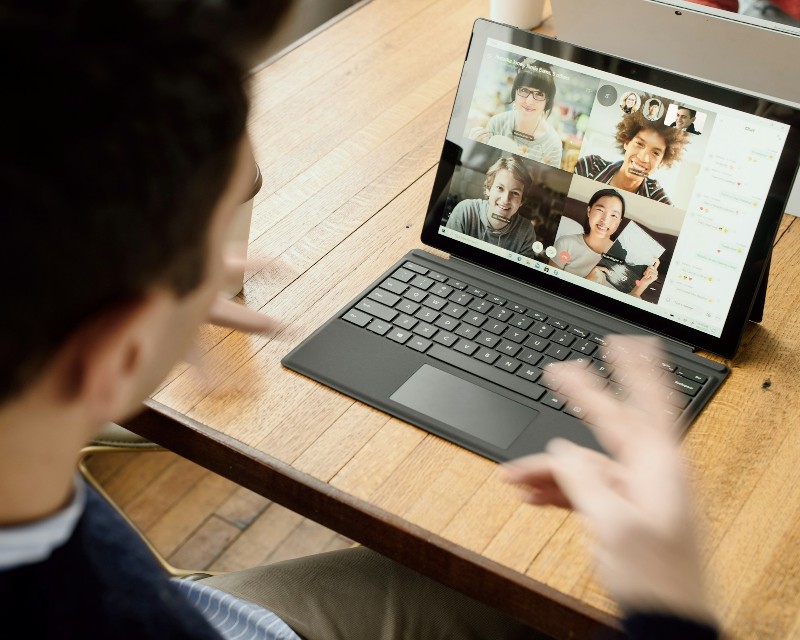VoiP Hardware: What Equipment do you need to get going?
The landline telephone has been symbolic of communication for decades. Even the “Call” buttons on smartphones look like receivers, although mobile phones look nothing like traditional handsets anymore. But the old telephone network may be in its twilight years. Service providers are moving away from analogue altogether.
We are now entering a world where VoIP is the norm.
Many businesses aren’t ready to hang up just yet. Even as home use continues to plummet, around 77 percent of businesses, mostly small ones, still rely to some extent on their landline phones.
But there’s little to stop the digitisation of communications. BT plans to phase out its ISDN and PSTN networks by 2025. Businesses need to start adapting their systems to avoid complications from the switch off. And that starts with upgrading your hardware.
But First, Some Terminology Explained
VoIP, PBX, PSTN–the switch to Internet-enabled telephony can seem daunting to many because of the sheer amount of tech jargon floating around. Yet the concepts underneath the acronyms are relatively easy to grasp, even for non-tech savvy individuals:
- VoIP (Voice Over Internet Protocol): The system that converts calls into data that can be parsed through Internet connections.
- PBX (Private Branch Exchange): The private network that businesses use to connect phones, route calls, and configure settings.
- PSTN (Public Switched Telephone Network): The entire network of telephone lines, underground copper wires, and switching systems that route and transmit call data.
VoIP-Enabled Phones
Old VoIP phones used to be limited to modem connections and phone-to-phone only calls. Thanks to advancements in IP telephony, VoIP calls today can be made from your desk or computer. Sometimes, you don’t even need a handset. Certain types of software allow you to make VoIP calls from your phone or tablet.
IP Phones
Service providers typically provide phones that are already pre-configured and thus are plug-and-play to any waiting Ethernet port. Phones bought separately, however, need to be configured correctly. Things like firewall settings between phones and your router and Quality of Service (QoS) configurations need to be set up to ensure calls are free of jitter or latency.
Softphones
Softphones technically aren’t hardware, but are applications that allow you to use compatible devices such as your smartphone or tablet as VoIP devices. Examples of popular softphone software include RingCentral Office and Cisco Jabber. These platforms typically are all-in-one communication solutions, letting you hold video conferences and receive and send messages as well as calls.
PC Handsets
PC handsets are units that connect to computers through an Ethernet cable or USB connection. These devices can be used in combination with softphones, VoIP software, and virtual machines.
Analog Telephone Adapters (ATA)
In some cases, especially for smaller businesses, buying a load of new hardware for one or two phones isn’t practical. That’s where Analog Telephone Adapters (ATA) come in. These hubs function as the bridge between landline and digital connections, converting signals from old phones into data packets the Internet can parse.
VoIP Gateways
VoIP gateways are devices that can convert calls from analogue phones into digital data. Although functionality similar to ATAs, gateways can process hundreds of calls at a time, making it a better option for larger enterprises whose telephone network extends beyonds hundreds of users. Some getaways can also switch back to the PSTN when broadband connections fail, giving your communications lines increased resilience against downtimes.
Headsets
Business headsets are different from your run-of-the-mill headphones in sound quality and software support. For instance, Jabra headsets have Jabra Direct, an application that allows users to connect and control softphones remotely through one dashboard.
But perhaps even more important than compatibility is the audio quality. Since you’re going to use these devices to make calls, audio needs to be exceptional. Boom mics are typically built into the system, as these better isolate sound. Many headsets come with noise cancelling features, which is particularly vital for employees who work in close quarters.
Two other factors that separate good VoIP headsets from the bad: connectivity and call controls. While it may be tempting to go cordless, Bluetooth isn’t infallible. Interference can mess with call quality. Sometimes connections drop for no immediate reason. Dedicated call controls on the headset allow users to receive and end calls and toggle volume without switching windows.
Routers
If you’re working from home or with a small team, then regular routers can be enough to support your IP telephones. But for larger businesses, you’re going to want something more robust.
Higher end routers offer better functionality and security. All routers have basic firewalls in place, but some are more sophisticated than others. As another node on your network, IP phones carry the same risk as any other Internet-enabled device. So unlike phones on PSTN networks, these will require tighter security protocols.
Bandwidth bottlenecks are another serious issue that routers can help address. Some routers have QoS settings that allow you to prioritise call data, which helps preserve audio quality even on days when bandwidth around the office is congested.
Calls over the Internet seem like a simple enough concept. After all, it only takes a single tap on your smartphone. However, in the office with scores–even hundreds–of people trying to communicate, things get a little more complicated.
At Evolvit, we can help you determine the ideal mix of hardware for your business needs, as well as configure settings for optimal security and call quality. Book a free consultation today.






